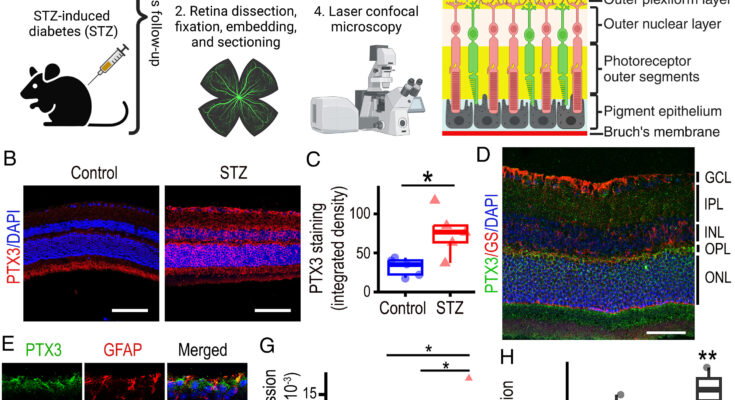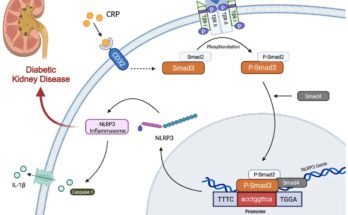
A study published in Proceedings of the National Academy of Sciences details the role of the protein Pentraxin 3 (PTX3) in diabetic retinopathy, a leading cause of blindness and visual impairment.
The findings show that PTX3 acts as a molecular driver of sterile inflammation in the diabetic retina, revealing that diabetic mice deficient in the protein were protected from visual impairment induced by the condition.
This study used multiple in vitro and in vivo models across three laboratories and involved researchers at Queen’s University Belfast, Humanitas University Milan, and the University of Liverpool.
The researchers also found that retinas from diabetic animals lacking PTX3 showed reduced inflammation and vascular degeneration, and that PTX3 impacted multiple cell types in the diabetic retinopathy setting, including Muller cells, astrocytes, microglia, retinal endothelial cells and neural cells.
This knowledge will help to facilitate the development of new treatments and prevention strategies.
Corresponding author Professor Reinhold J. Medina, Chair of Vision and Vascular Science at the University of Liverpool said, “Having identified PTX3 as a new molecular target in the diabetic eye, the development of a treatment to block its accumulation in the retina is needed.
“The striking finding that lack of PTX3 in diabetic retinas protected them from visual impairment is based on a 9-month diabetic mouse model. Whether this applies to humans will require further studies. More research into the specific molecular signaling triggered by PTX3 in diabetic retinas is also required, and we hope to design a new investigation to develop a drug targeting PTX3.
“Interestingly, this study was conceived with the original hypothesis that PTX3 presence in the diabetic retina was beneficial. However, as results progressed, it turned out our hypothesis was wrong, and PTX3 promoted disease. The rigor, amount, and quality of research data provided confidence to accept this unexpected and new knowledge surrounding PTX3 biology.”
Dr. Lucy Chambers, Head of Research Communications at Diabetes UK, said, “Eye problems are a frightening and too frequent complication of diabetes. But by revealing a new player that contributes to eye damage, this research could take us closer to new and better treatments that help more people with diabetes avoid devastating harm to their sight.”
More information:
Varun Pathak et al, Modulation of diabetes-related retinal pathophysiology by PTX3, Proceedings of the National Academy of Sciences (2024). DOI: 10.1073/pnas.2320034121
Citation:
New insights into diabetes-related vision problems to inform treatment and prevention (2024, October 3)
retrieved 3 October 2024
from https://medicalxpress.com/news/2024-10-insights-diabetes-vision-problems-treatment.html
This document is subject to copyright. Apart from any fair dealing for the purpose of private study or research, no
part may be reproduced without the written permission. The content is provided for information purposes only.
Source link




